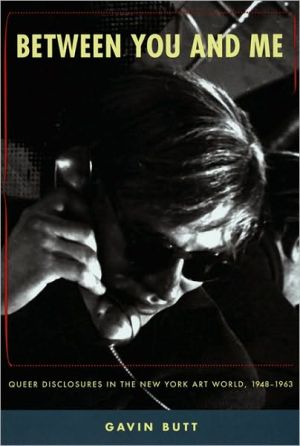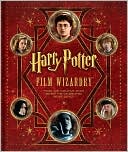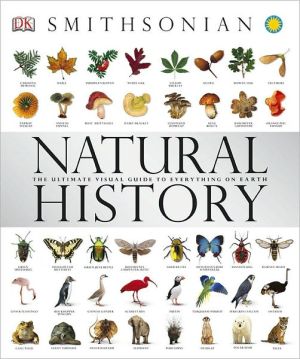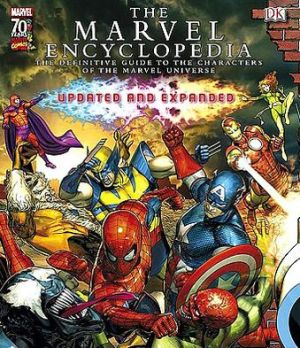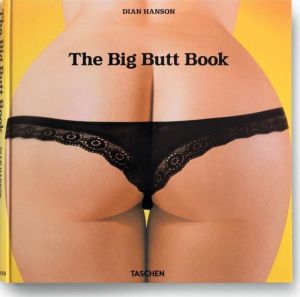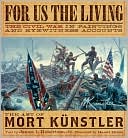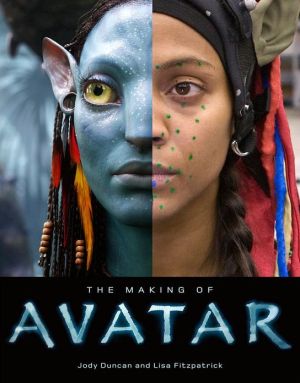Between You and Me: Queer Disclosures in the New York Art World, 1948-1963
In the decades preceding the Stonewall riots—in the wake of the 1948 publication of Alfred Kinsey’s controversial report on male sexuality and in the midst of a cold war culture of suspicion and paranoia—discussions of homosexuality within the New York art world necessarily circulated via gossip and rumor. Between You and Me explores this informal, everyday talk and how it shaped artists’ lives, their work, and its reception. Revealing the “trivial” and “unserious” aspects of the postwar art...
Search in google:
A reconsideration of queer American art culture of the mid-twentieth century.
BETWEEN YOU AND ME\ QUEER DISCLOSURES IN THE NEW YORK ART WORLD, 1948-1963 \ \ By Gavin Butt \ DUKE UNIVERSITY PRESS\ Copyright © 2005 DUKE UNIVERSITY PRESS\ All right reserved. \ ISBN: 978-0-8223-3498-9 \ \ \ \ Chapter One\ THE AMERICAN ARTIST IN A WORLD OF SUSPICION \ In an article published in The Saturday Review of Literature in 1951, entitled "What's Holding Back American Art?" the artist Thomas Hart Benton provides a downbeat assessment of the condition of postwar U.S. art. In part a lament for the waning influence of the Regionalist school of painting, of which he was the most public proponent in the 1930s, it tells the story of an art world tragically diverted from the task of producing an "American" art for the American people. Tragic because, for Benton, not only had his two chief compatriots in the Regionalist project, Grant Wood and John Steuart Curry, recently died, but, by 1951, support for the idea of a popular nationalistic art was dying out with them. Younger artists were no longer interested in making heroic images of laboring men toiling with a mythologized American land, nor were they concerned with making an art that would have mass appeal. Instead, Benton writes, they were increasingly drawn away from the "living world of active men and women into an academic world of empty pattern" (9). This "world,"pejoratively invoked by Benton here, was that of modernist art-one in which the narrow Americanisms of the prewar years had no place, and in which the values of a certain kind of internationalism had come to hold sway.\ But in setting out his views in the Saturday Review, Benton does more than simply lament the passing of artistic fashion. He also elaborates a dramatic tale of art-world intrigue that purports to explain this shift in artistic priorities. Vividly evoking a profession held in the yoke of powerful and malignant forces, he ventures that modernism's rise, and Regionalism's concomitant fall, had been brought about by the concerted efforts of a few "cultist groups" and their "disciples" working to control the direction of American art. Led by the Museum of Modern Art in New York, Benton contends that various art professionals-including museum directors, curators, critics, and teachers-were working in concert to actively discredit the values of Regionalism and promote modernist art in its place. "Coteries of highbrows, of critics, college art professors, and museum boys," he writes, "the tastes of which had been thoroughly conditioned by the new esthetics of twentieth century Paris," were involved in a conspiracy to undermine American art in favor of securing the widespread acceptance of elitist, imported alternatives. Modernism-invoked here as a distinctly foreign, European phenomenon-was simply being imposed upon the American art-world by means of the stealth and duplicity of its chief defenders. By readily accepting modernist values and priorities, young artists were doing little more, Benton suggests, than colluding unwittingly in a sustained campaign to erode American art from within.\ As we shall see during the course of this chapter, similar kinds of conspiracy theories were common currency in American culture during the early fifties. In many ways Benton's assessment of the postwar art world here can be seen to typify McCarthyite concerns with rooting out an anti-Americanism presumed to be rampant within the nation's governmental and cultural agencies. But what concerns me here at the outset is how, in referring to the architects of this supposed conspiracy, Benton's fondness for vituperative innuendoes, such as "museum boys" and elsewhere "ivory tower boys," leaves us in little doubt about the more profoundly sexual basis of this institutional conniving. The use of the word boys here refers elliptically to homosexuality by suggesting "nancy-boys" and "sissy-boys," the most widely used terms to denote gay men at the time. It is clearly intended to suggest the prevalence of gay men among the communities of America's museum curators and other art professionals. In addition, the word conjures up the objects of desire supposedly favored by these men, and it suggests a pederastic core at the heart of their attempts to influence young artists. Benton worries that gay men will turn young artists away from the world of "active men and women" toward the supposedly empty patterning of avant-garde art and in the process create a generation of effeminate and ineffectual, if not homosexual, artists. Drawing on the rich and allusive power of suggestion, Benton works to make his readers share this worry by imagining an art-world conspiracy profoundly motivated by a deviant, predatory dynamic; viewing modernist art as a kind of European homosexual sensibility being schooled into young artists by their pseudo-Wildean elders.\ The stark outline of a gay conspiracy here will likely strike present-day readers as absurd, and, for those familiar with Benton's near legendary chauvinism and homophobia, as simply the paranoid imaginings of an arch reactionary. This was also the view of many of Benton's own contemporaries who, by the early 1950s, had come to be largely incredulous of his prejudicial and abusive agenda. Cut off by the turn in the artistic tide, his regressive and provincial tendencies were paid scant serious attention by a generation of artists engaged in debates about "advanced" modernist art. Speaking perhaps for many in the art world at this time, the art critic James Thrall Soby dismisses much of Benton's diagnosis of American art as absurd invective. Writing in the same edition of the Saturday Review, Soby belittles the artist's argument on numerous counts, parrying it point by point with the "facts" to the contrary, including those to counter the accusations of homosexuality in high places: "That there have been a few homosexuals on the staffs of American museums no one can fairly deny. But they have been and are vastly outnumbered by normal men. Indeed, I can't think of a single major art museum in this country whose director's sex life is open to Mr. Benton's innuendo." Soby hereby attempts to put an end to the idea of a gay conspiracy by denying any actual basis for it in reality. Benton's assertions of an art world overrun with gay men simply do not square, Soby contends, with the reality of a situation in which "normal" men outnumber them. And, of the most influential positions in the museum world, Soby confidently asserts, none are taken up by gay men.\ Soby was a much more respected figure than Benton in the avant-garde circles of the early 1950s. He had written important catalogue essays and books on various modern artists throughout the 1930s and 1940s, and he was assistant director at the Museum of Modern Art in New York. But even though spoken from a more socially and institutionally sanctified position than Benton, Soby's denials, I want to suggest, and others like it in American culture in the ensuing years, did little to curtail the growing suspicions about the prevalence of homosexuality in the American art world. Such suspicions were not consigned to the overactive imagination of a single virulent homophobe by dint of the simple and sober assertion of fact. On the contrary, what I want to suggest in the course of this chapter is that in the context of widespread popular anxieties about the presence of homosexuality more generally within American society, "facts" began to look increasingly dubious as any kind of ground for establishing the final word on matters sexual.\ I am therefore not interested here in latterly adjudicating the sociological truth or otherwise of Benton's and Soby's competing claims. I am not interested in prioritizing one account over the other, but rather in comprehending the effect that such claims and counterclaims had in terms of the production of what I want to call a culture of homosexual suspicion. The dialogue between Benton and Soby might be seen as part of the fabric of a culture in which homosexuality was brought into discourse as an object of epistemological doubt; in which it was discursively constituted, by turns, as being both everywhere and nowhere. This is because the idea of widespread homosexuality in the art world was productively kept alive through the dynamic of assertion and counterassertion, of avowal and disavowal, which characterizes Benton's and Soby's dialogue in the Review.\ But why should it be so difficult, for example, to believe in the truth of Soby's account? And why should such luminous accounts of deviancy in the art world be difficult to shrug off, especially when perpetuated by such a discredited figure as Benton? A further homophobic attack penned by Benton for his autobiography An Artist in America, reissued almost simultaneously with the publication of his Review article in December 1951, begins to suggest some possible answers to these questions. Spinning a line not dissimilar to the Review piece, Benton attacks the deleterious influence exerted by a "concentrated flow of aesthetic minded homosexuals into the various fields of artistic practice" in America's major cities (A 264). These men are described by Benton as being "for the most part, of the gentle feminine type with predilections for the curving wrist and outthrust hip" (A 265). They have "lisping voice[s] and mincing ways," and "specially conditioned psychologies" which render them weak and ill equipped to judge work dealing with the rough and tumble of everyday life (A 266). Graphically delineated for the purposes here of vilification, Benton's phobic imagination conjures a group of deviant men conspicuous by their effete bodily deportments and mannerisms. Not only do they have "predilections for the curving wrist and outthrust hip," but they also exhibit a "swing in (their) gait," "extraordinary manners," and a "simple preponderance of feminine characteristics" (A 265). In drawing attention to the homosexual's identifiable bodily features in this manner, Benton trades on the idea of (his) sexuality as a phenomenon evidently marked on the visible body. The coding of bodily styles-whether the turn of a wrist, or the swish of a hip-betrays the sexual identities of such men as familiar and stereotypical "fairies."\ The faith that Benton places here in the truths revealed by bodily appearance was central to the project of much figurative painting in the 1930s, including his own. Regionalist painting, in its bid to make American society comprehensible to a popular audience, laid great emphasis on the ready legibility of social types through the codings of bodily appearance. From the muscled torso and heroic pose of a dramatically lit steelworker (fig. 2), to the city broker identifiable by his suit and ticker tape machine (fig. 3), such painting demonstrated a profound attachment to the truth-telling capacities of the visible body. The realities of American life were given visual form through a stereotyped taxonomy of socially marked bodies which, as Erika Doss has noted, Benton derived at least in part from his experiences of working in Hollywood. The ready recognizability of social types common in Hollywood cinema was a feature that Benton worked to emulate in his painting as part of his bid to make it comprehensible to a popular audience. The graphic descriptions of the art world's mincing characters in his autobiography, as well as the sissy boys suggested by the Review article, might be productively understood as part of just such an economy of populist representation. Immediately recognizable, because dramatically different from such iconic images of male normalcy as Benton's muscled and macho laborers, such descriptions sought to view homosexuality as identifiable by, and contained within, particular forms of deviant embodiment.\ But buried amongst the torrent of Benton's homophobic accusation and stereotyping is something important in terms of the argument of this book. For even as Benton graphically delineates the registers of effete visibility through which gay men in the arts were identifiable, he paradoxically, at the same time, suggests that the insidious nature of their influence stems from their ability to "attain their positions by ingratiation or subtle connivance" and to "pass" unnoticed (A 265). Not only does this suggest a social agency seemingly at odds with their stereotypically effete and passive condition, but it also suggests the homosexual's ability to exceed or transcend his essentially feminized frame of appearance. Thus Benton performs a double move, insisting on the conspicuous visibility, and simultaneous invisibility, of gay men in art and society. This invisibility was, according to him, achieved by the willful deceptions practiced by gay men in order to hide their sexuality; their fondness for what he calls "obscurity" and "devious and indistinct meanings" being a clear indication of their fundamentally duplicitous nature.\ Benton's recognition here of an elusive homosexual agency evidences a troubling awareness on his part of the uncertainties attending the visually codifiable aspects of male identity. For if a gay man could pass in the art world unnoticed and unmarked as such, dissimulated as his normative heterosexual other, then what of the available resources for telling "straight" from "gay"? How, or to put it more profoundly, could one tell the difference at all? And if one couldn't tell the difference, then what, for instance, might one think about Soby, and of the authority of his denials of homosexuality in the arts? If distinguishing between gay and straight was now something of a vexed problem, then what would stop us from fancifully (and phobically?) construing Soby as one of Benton's duplicitous queer types, and approaching his denials as simply the motivated and distorted "untruths" perpetuated by a gay conspiracy?\ In the context of such unruly suspicions, it is not only Benton's account of homosexuality in the arts that might appear as motivated by political interests. If Benton's accusations could easily be construed as driven by his chauvinistic politics, then given the possible, though by no means provable, ubiquity of gay sexuality in the arts, it would have been feasible to imagine Soby's denials as motivated by the political agenda of a liberal/homosexual "elite." With possible ideological distortions on either side, the truth, as it were, about homosexuals in the art world would therefore have seemed elusive and far from easily available. Soby's social and institutional authority notwithstanding, his denials may have thus proved ineffective in curtailing Benton's lurid accusations, contributing instead to a culture of uncertainty surrounding the representation of homosexuality in American culture at this time.\ (Continues...)\ \ \ \ \ Excerpted from BETWEEN YOU AND ME by Gavin Butt Copyright © 2005 by DUKE UNIVERSITY PRESS. Excerpted by permission.\ All rights reserved. No part of this excerpt may be reproduced or reprinted without permission in writing from the publisher.\ Excerpts are provided by Dial-A-Book Inc. solely for the personal use of visitors to this web site. \ \
Introduction : gossip : the hardcore of art history?11The American artist in a world of suspicion232Idol gossip : myths of genius and the making of queer worlds513The gift of the gab : camp talk and the art of Larry Rivers744Dishing on the swish, or, the "inning" of Andy Warhol1065Bodies of evidence : queering disclosure in the art of Jasper Johns136Afterword : flirting with an ending163
\ From the Publisher“Between You and Me is a brilliant read that flirtatiously winks and kisses its way through the New York art world of the postwar period, turning our favorite icons inside out and back in again. It’s all in the gossip. Larry Rivers painted a ‘visual gossip column’ and was described by Frank O’Hara as a ‘demented telephone,’ but it takes a smart flirt (the best kind) like Gavin Butt to see gossip’s methodological promise. Taking gossip into his own mouthy hands, Butt slurs the studios of Rivers, Jasper Johns, and Andy Warhol with their own reckless talk: kisses turn into smacks, and winks into home runs. (Between you and me, that’s how I like it.)”—Carol Mavor, author of Becoming: The Photographs of Clementina, Viscountess Hawarden\ “Between You and Me is boldly original and beautifully written. Gavin Butt renders a rich (which is to say dishy) description of a queer past that might enable us to imagine a queer futurity. His book will stand as a lasting contribution to queer theory and visual cultural studies and, perhaps more importantly, serve as a political and methodological wake-up call to the discourse of art history.”—José Esteban Muñoz, coeditor of Pop Out: Queer Warhol\ \ \
